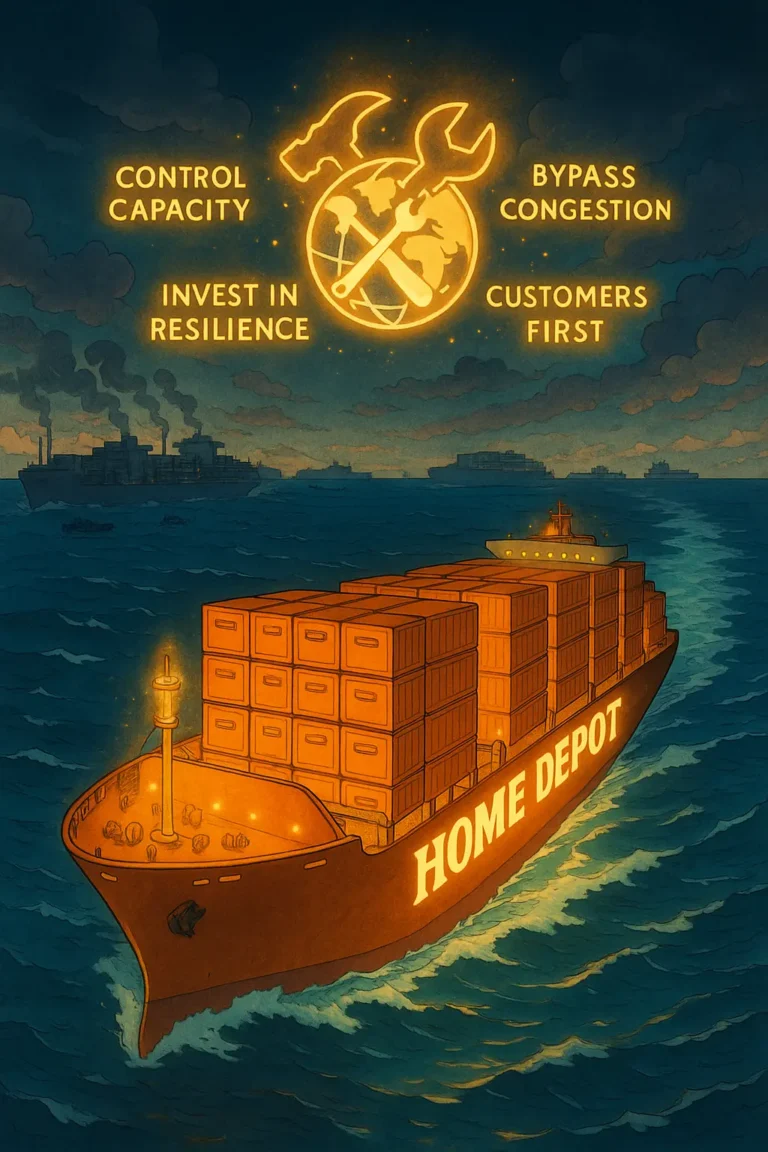
In today’s business climate, two key factors determine the success of any logistics industry, even in Africa; they are the cost of the operation, and the speed of delivery and balancing them is essential.
They are the most important factors because one has to do with the survival of the supply chain, and the other has to do with customer satisfaction.
You may think of it as the business and customer fighting for relevance, but the trick is they depend on each other.
As a logistics manager trying to compete, you cannot have one without the other, or you will soon be out of business.
This is why balancing the two factors is necessary. In this article, we will explore strategies for balancing them and why it is important to balance the two.
Why is Balancing Cost and Speed in the Logistics Operation Important?
There are two primary reasons why the two factors are important for any logistics business.
1. Efficient Use of Resources
When there is a balance between the two factors, it helps you effectively utilize the resources available to your operations.
This way, you do not have to over-invest or under-invest in tools and infrastructures, ensuring your business can save more money.
Efficient use of resources means the resources are used cost-effectively while ensuring the logistics operations hit all necessary KPIs.
2. Customer Satisfaction
Effectively balancing cost and speed in the logistics operation ensures that your customers are happy with your service, leading to satisfaction.
What could make the customer happy may vary from industry to industry or business.
For instance, when delivering food, taking the entire day is counterproductive. However, when making a fashion delivery, it is okay if the delivery comes the next day or, in rare cases, the day after that.
When there is balance, businesses get the goods to the customers at the right or acceptable time.
3. Competitive Advantage
You will enjoy a competitive advantage when you can strike the right balance between cost management and speed.
This is because you know how to get the goods to your customers in an acceptable time frame, which allows you to keep the cost of operations down.
The time frame here is quite important. Many businesses want to deliver as quickly as possible, even if it costs too much.
However, they could delay a bit, which the customer will not care about. And the business can save money and still enjoy consumer satisfaction.
What are the Challenges of Balancing Cost and Speed Effectively in the African Logistics Industry?
As you can imagine, balancing the two can be tricky or challenging, especially considering the limitations across Africa. There are a few reasons why.
1. Complex Nature of the Decision-Making
When balancing cost and speed, there are many factors one must consider, including infrastructure available, expertise, and so on.
Getting all these factors in place can be quite cumbersome for logistics managers, and considering them together and finding the right rhythm is another matter.
2. Supply Chain Disruptions
Disruptions like accidents or political instability could occur. Morocco recently had an earthquake, the first on the continent. These disruptors or disruptions are usually unseen and can cause problems for the business.
Supply chain disruptions tend to throw away the entire planning and balancing process, forcing the operation to prioritize one after the other.
3. Transportation Challenges
The right transportation model can help you balance the cost and speed factor. The maths is not always straightforward, though.
Most businesses use the hybrid mode to balance the entire process better. However, a single mistake in the supply chain can cost
Strategies for Balancing Cost and Speed in Your Logistics Business
There are a few strategies to consider when balancing both factors in your business. We will explore some of them here.
1. Understand The Limitation of Your Logistics Business
When you know or understand the limitations of your logistics business, it helps avoid surprises.
Knowing your limitations allows you to get in front of them while focusing on the goals, which, in this case, are speedy delivery while cutting down costs.
This also helps you manage customers’ expectations and communicate your timelines effectively to them. Customers are happy when businesses go over and beyond, especially when they understand that the business, despite its size or limitation, has their best interest at heart.
2. Warehouse Location
The location of the warehouse matters. Close proximity to the market ensures your business can reach customers speedily.
However, with this proximity, the business is set to reduce the cost of energy resources such as fuel, diesel, and so on. It also limits the maintenance of vehicles.
Warehouse location is the ultimate win-win solution for balancing cost and speed in any logistics business.
3. Leveraging Technology
Technology is one of the most important solutions for any logistics business. After all, it has set the 21st-century supply chain apart from its predecessors.
So, it makes sense for businesses in Africa to continue to leverage tech solutions, but that is often not the case. Several reasons exist, such as perceived high cost and lack of adequate expertise.
When leveraging tech solutions, it is important to focus only on what streamlines the operational processes and then go from there.
Examples of tech solutions that help are route optimization software and automation in order processing.
4. Transportation Mode
Choosing the right transportation mode can make all the difference for your logistics business. There has to be the right balance between speed and cost. For instance, transporting cargo across continents doesn’t make sense when you can transport it on water.
The cost difference is astronomical, and unless your customers are willing to pay for it (which many will not), it only makes sense to transport it through water.
In many cases, trying to get the best transportation mode will involve two or more modes, including rail, water, road, and air. Navigating them until you get the right mix propels your business’s efficiency and productivity.
FAQs on Balancing Cost and Speed in Your Logistics Business
1. What transportation modes are commonly used in African logistics to balance cost and speed?
The most common forms of transportation are air, sea, train, and road. The best option will depend on the particulars of each shipment; for larger distances, the sea is more economical, and the road offers the greatest flexibility.
2. How can logistics businesses in Africa mitigate the impact of supply chain disruptions on cost and speed?
The impact of supply chain disruptions can be lessened by implementing responsive communication mechanisms, diversifying suppliers, and creating strong risk management and backup plans.
Conclusion
Balancing cost and speed in your logistics business can make all the difference. It ensures your business strives while ensuring the customers are equally satisfied. This is the ultimate mixture to gain any competitive advantage.
In today’s business climate, two key factors determine the success of any logistics industry, even in Africa; they are the cost of the operation and the speed of delivery and balancing them is essential.
They are the most important factors because one has to do with the survival of the supply chain, and the other has to do with customer satisfaction.
You may think of it as the business and customer fighting for relevance, but the trick is they depend on each other.
As a logistics manager trying to compete, you cannot have one without the other, or you will soon be out of business.
This is why balancing the two factors is necessary. In this article, we will explore strategies for balancing them and why it is important to balance the two.
Why is Balancing Cost and Speed in the Logistics Operation Important?
There are two primary reasons why the two factors are important for any logistics business.
1. Efficient Use of Resources
When there is a balance between the two factors, it helps you effectively utilize the resources available to your operations.
This way, you do not have to over-invest or under-invest in tools and infrastructures, ensuring your business can save more money.
Efficient use of resources means the resources are used cost-effectively while ensuring the logistics operations hit all necessary KPIs.
2. Customer Satisfaction
Effectively balancing cost and speed in the logistics operation ensures that your customers are happy with your service, leading to satisfaction.
What could make the customer happy may vary from industry to industry or business.
For instance, when delivering food, taking the entire day is counterproductive. However, when making a fashion delivery, it is okay if the delivery comes the next day or, in rare cases, the day after that.
When there is balance, businesses get the goods to the customers at the right or acceptable time.
3. Competitive Advantage
When you can strike the right balance between cost management and speed, you will enjoy a competitive advantage.
This is because you know how to get the goods to your customers in an acceptable time frame, which allows you to keep the cost of operations down.
The time frame here is quite important. Many businesses want to deliver as quickly as possible, even if it costs too much.
However, they could delay a bit, which the customer will not care about. And the business can save money and still enjoy consumer satisfaction.
What are the Challenges of Balancing Cost and Speed Effectively in the African Logistics Industry?
As you can imagine, balancing the two can be tricky or challenging, especially considering the limitations across Africa. There are a few reasons why.
1. Complex Nature of the Decision-Making
When balancing cost and speed, there are many factors one must consider, including infrastructure available, expertise, and so on.
Getting all these factors in place can be quite cumbersome for logistics managers, and considering them together and finding the right rhythm is another matter.
2. Supply Chain Disruptions
Disruptions like accidents or political instability could occur. Morocco recently had an earthquake, the first on the continent. These disruptors or disruptions are usually unseen and can cause problems for the business.
Supply chain disruptions tend to throw away the entire planning and balancing process, forcing the operation to prioritize one after the other.
3. Transportation Challenges
The right transportation model can help you balance the cost and speed factor. The maths is not always straightforward though.
Most businesses use the hybrid mode to balance the entire process better. However, a single mistake in the supply chain can cost
Strategies for Balancing Cost and Speed in Your Logistics Business
There are a few strategies to consider when balancing both factors in your business. We will explore some of them here.
1. Understand The Limitation of Your Logistics Business
When you know or understand the limitations of your logistics business, it helps avoid surprises.
Knowing your limitations allows you to get in front of them while focusing on the goals, which, in this case, are speedy delivery while cutting down costs.
This also helps you manage customers’ expectations and communicate your timelines effectively to them. Customers are happy when businesses go over and beyond, especially when they understand that the business, despite its size or limitation, has their best interest at heart.
2. Warehouse Location
The location of the warehouse matters. Close proximity to the market ensures your business can reach customers speedily.
However, with this proximity, the business is set to reduce the cost of energy resources such as fuel, diesel, and so on. It also limits the maintenance of vehicles.
Warehouse location is the ultimate win-win solution for balancing cost and speed in any logistics business.
3. Leveraging Technology
Technology is one of the most important solutions for any logistics business. It is, after all, what has set the 21st-century supply chain apart from its predecessors.
So, it makes sense for businesses in Africa to continue to leverage tech solutions, but that is often not the case. There are several reasons why, such as perceived high cost and lack of adequate expertise.
When leveraging tech solutions, it is important to focus only on what streamlines the operational processes and then go from there.
Examples of tech solutions that help are route optimization software and automation in order processing.
4. Transportation Mode
Choosing the right transportation mode can make all the difference for your logistics business. There has to be the right balance between speed and cost. For instance, transporting cargo across continents doesn’t make sense when you can transport it on water.
The cost difference is astronomical, and unless your customers are willing to pay for it (which many will not), it only makes sense to transport it through water.
In many cases, trying to get the best transportation mode will involve two or more modes, including rail, water, road, and air. Navigating them until you get the right mix propels your business’s efficiency and productivity.
FAQs on Balancing Cost and Speed in Your Logistics Business
1. What transportation modes are commonly used in African logistics to balance cost and speed?
The most common forms of transportation are air, sea, train, and road. The best option will depend on the particulars of each shipment; for larger distances, the sea is more economical, and the road offers the greatest flexibility.
2. How can logistics businesses in Africa mitigate the impact of supply chain disruptions on cost and speed?
The impact of supply chain disruptions can be lessened by implementing responsive communication mechanisms, diversifying suppliers, and creating strong risk management and backup plans.
Conclusion
Balancing cost and speed in your logistics business can make all the difference. It ensures your business strives while ensuring the customers are equally satisfied. This is the ultimate mixture to gain any competitive advantage.

Obinabo Tochukwu Tabansi is a supply chain digital writer (Content writer & Ghostwriter) helping professionals and business owners across Africa learn from real-world supply chain wins and setbacks and apply proven strategies to their own operations. He also crafts social content for logistics and supply chain companies, turning their solutions and insights into engaging posts that drive visibility and trust.






